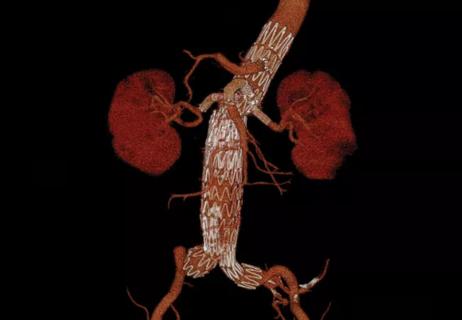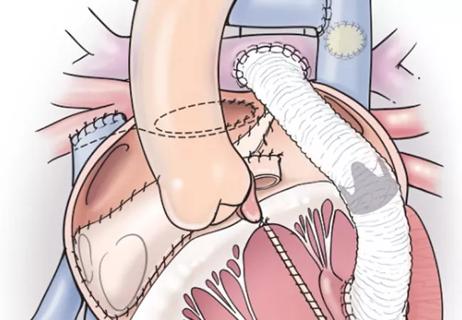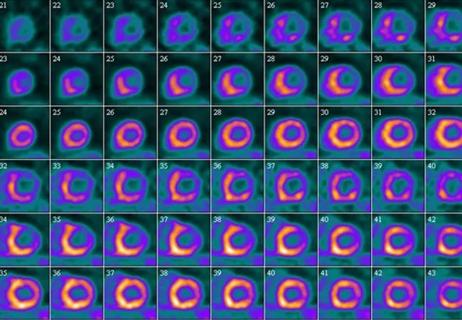Study shows incremental value from guideline-directed medical therapy and transradial access

A comprehensive systems-based strategy for acute management of ST-segment elevation myocardial infarction (STEMI) improves outcomes compared with a singular focus on door-to-balloon time, according to new research from a team of Cleveland Clinic cardiology and emergency medicine investigators.
Advertisement
Cleveland Clinic is a non-profit academic medical center. Advertising on our site helps support our mission. We do not endorse non-Cleveland Clinic products or services. Policy
The study, published in Circulation: Cardiovascular Interventions, evaluated the contributions of guideline-directed medical therapy and transradial primary percutaneous coronary intervention (PCI), as well as prompt door-to-balloon time, and found that each component offers incremental outcome improvements.
“This study indicates that it’s time to move beyond focusing solely on door-to-balloon time for providing quality acute STEMI care,” says the study’s corresponding author, Cleveland Clinic cardiologist Umesh Khot, MD. “We found that the best approach is to consistently achieve a range of STEMI care best practices.”
Door-to-balloon time has been the focus of intense efforts to improve STEMI outcomes for the past two decades via local and national quality initiatives. The Centers for Medicare & Medicaid Services publicly reports it as a hospital performance measure. As a result, door-to-balloon time has dramatically improved nationally, but in-hospital mortality from STEMI in the U.S. has largely stayed the same at about 5 percent.
“Randomized trials of STEMI patients have found improved outcomes from prompt guideline-directed medical therapy and transradial primary PCI,” observes co-author Samir Kapadia, MD, Cleveland Clinic’s Section Head of Interventional Cardiology, “but the incremental prognostic value of each intervention is unknown, and they have not been included in many STEMI quality improvement initiatives.”
The new study assessed 1,272 consecutive patients with STEMI treated with PCI at Cleveland Clinic from January 2011 through December 2016. Treatment data and outcomes were taken from the medical record and from follow-up phone calls to patients if needed. Survival status at 30 days was ascertained in 98.7 percent of the study population.
Advertisement
STEMI care metrics were defined as the following:
Among the 1,272 STEMI cases managed during the study period, STEMI care metrics were achieved at the following rates:
Notably, 30-day mortality improved incrementally with the number of metrics achieved, as follows:
After adjustment for known clinical predictors of STEMI in-hospital mortality, achieving two or more metrics was associated with a significant 61 percent reduction of in-hospital mortality (odds ratio = 0.39; 95% CI, 0.16-0.96; P = 0.041).
Increasing achievement of metrics was also found to have a graded association with reduced rates of bleeding, cardiogenic shock, reduced ejection fraction, cardiovascular mortality and all-cause mortality.
Each metric yielded incremental prognostic value in modeling the risk of in-hospital death when considered sequentially in the order that they were delivered clinically.
Advertisement
Patients with zero metrics were more likely to be women, to have in-hospital STEMI presentation and to have higher rates of major comorbidities at baseline.
Drs. Khot and Kapadia note that although door-to-balloon time has received nationwide attention and improvement, obstacles need to be overcome for adopting the other metrics.
Currently, strategies to standardize the use of prompt guideline-directed medical therapy for STEMI are lacking. A previous Cleveland Clinic study on the same data set (J Am Coll Cardiol. 2018;71:2122-2132) found that the use of a “STEMI Safe Handoff Checklist” improved the rate of guideline-directed medical therapy use and reduced outcome disparities between men and women.
Hospitals also should strive to standardize the adoption and use of transradial primary PCI as the favored approach in STEMI, advises Dr. Kapadia, who notes that it was the metric least likely to be achieved in this study. He also cites a 2017 report that the rate of its adoption is less than 25 percent, based on the NCDR CathPCI Registry.
Dr. Khot acknowledges that STEMI is a highly complex clinical event, with patients having a diversity of presentations and comorbidities, which may prompt some clinicians to resist adopting what they see as a “cookbook” approach. But he argues that the opposite should be true. “The variability of this condition makes it imperative that a consistent strategy be adopted that encompasses the range of proven management approaches,” he says. “Multifaceted, evidence-based STEMI care offers the opportunity for dramatically improving STEMI outcomes.”
Advertisement
Advertisement

General principles for use of the long-awaited new therapy approach

EVAR pioneer Dr. Juan Parodi surveys the past and future of a revolutionary procedure

Latest systems combine continuous glucose monitoring with automatic basal insulin delivery

Common congenital lesion is not always benign

New study yields pre-pandemic insights for the post-pandemic landscape

Series of five patients successfully treated with ‘ventricular switch’

Results also show eagerness to learn more

Cleveland Clinic-developed tool guides referrals and predicts mortality